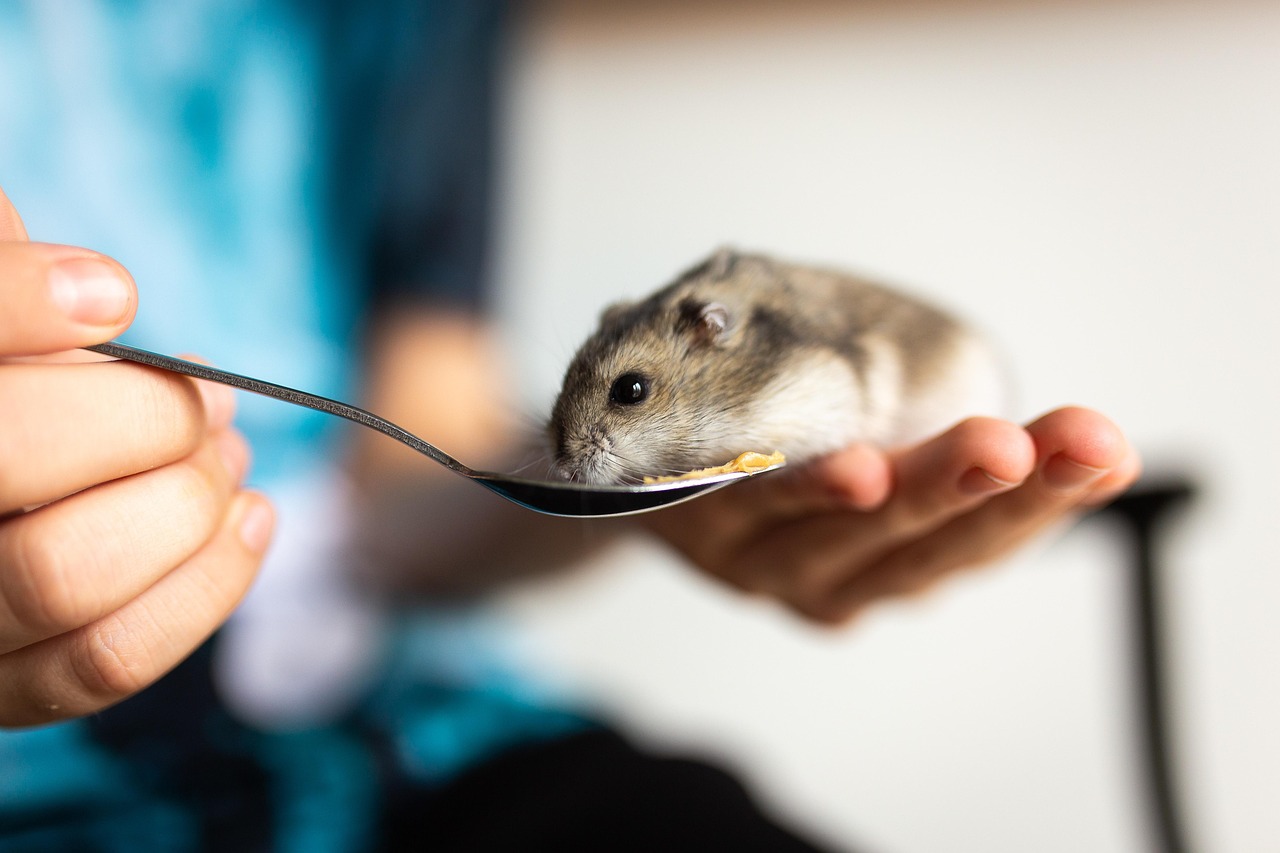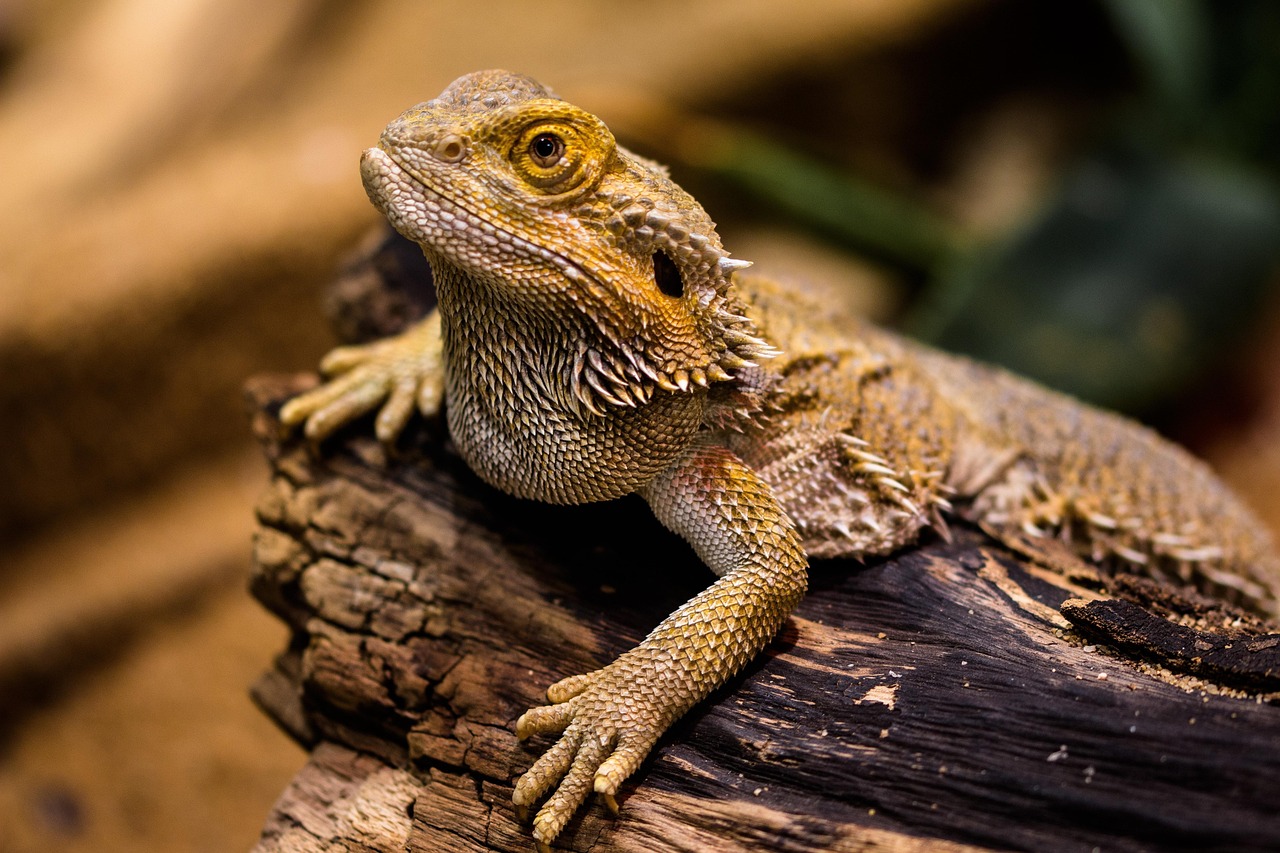Welcome to Hamster Care: A Friendly Starter Guide
Thinking of bringing a tiny friend home? This beginner-friendly, step-by-step guide will walk you through everything you need to know to start with confidence. Expect clear checklists, realistic time estimates, and simple safety tips that make care easy.
Inside you’ll find cage setup instructions, daily and weekly routines, taming steps, and a practical feeding schedule. Each section keeps tasks short and manageable so you can build good habits without stress. By the end you’ll have a cozy, safe home and a calm plan for handling, feeding, and spotting health issues. You’ll also learn emergency signs and simple vet tips for fast, confident response. Ready to meet your new hamster? Let’s get started!




Hamster Basics: Picking the Right Pet and Knowing Their Needs
Common breeds at a glance
Here are the most common pet hamsters and what makes each type different:
Real-world tip: a friendly Syrian often lets you scoop it up after a couple of weeks of consistent gentle handling, while a Roborovski may always prefer watching from a safe distance.
Syrian vs dwarf: which fits your life?
If you want a cuddly, easy-to-handle pet and space for a bigger cage, pick a Syrian. If you’re tight on space or curious about a social pair and don’t mind fast little movers, consider dwarf types. Syrian cages should be at least 80 x 50 cm floor space; dwarfs do fine in slightly smaller setups but bigger is always better.
Lifespan, nocturnal habits & commitment
Expect 1.5–3 years depending on breed (Syrians ~2–3 years; dwarfs often 1.5–2.5). Hamsters are nocturnal/crepuscular — most active from dusk to early morning. Daily commitment: quick check, fresh water, spot-cleaning, 10–20 minutes of calm handling or enrichment. Weekly: deep-clean cage and replace bedding.
Picking a healthy hamster: breeder & rescue tips
Look for bright eyes, clean nose, dry and smooth fur, normal breathing, alertness, and a good body condition. Avoid animals with sneezing, wet fur around the tail or nose, discharge, visible parasites, open wounds, or extreme lethargy. Ask breeders/rescues about temperament, age, and any health history; request to see the hamster active in its current habitat before deciding.
Essential Supplies: What to Buy Before Bringing Your Hamster Home
Cages & safe housing
Pick a roomy, escape-proof home: wire cages with deep plastic bases, large glass tanks, or modular bin cages all work. Minimum floor space: aim for ~80 × 50 cm for Syrians and slightly smaller for dwarfs — bigger is always better. Check wire-bar spacing: ≤½” (12 mm) for Syrians, ≤¼” (6 mm) for dwarf species to prevent escapes and injuries.
Bedding, hideouts & comfort
Avoid cedar and pine — their oils irritate lungs. Choose paper-based, aspen shavings, or hemp bedding (dust-free options are kinder to tiny noses). Add at least one snug hide (wood or ceramic), nesting material, and a chew-safe house — hamsters love burrow-feeling spots.
Wheels, feeders & water
Use a solid (no wire rungs) wheel to protect spines. Size guide: ~11″ (28 cm) for Syrians, ~8″ (20 cm) for dwarfs. Buy a ceramic food bowl (hard to tip) and a leak-proof sipper bottle with a metal spout.
Safety & small tools
Thermometer to keep habitat 18–24°C, a secure lid to stop escapes (especially for climbers), and a baby-safe locking clip. Cleaning essentials: a small scoop, gentle pet-safe disinfectant, sponges, and trash bags for quick bedding swaps.
Budget-friendly swaps & real-life tips
A sturdy cardboard box or terra-cotta plant pot makes a fantastic temporary hide; PVC pipe sections are cheap tunnels. I once saved money by upcycling a ceramic mug as a food bowl — it was spill-proof and hammy-approved.
Quick shopping checklist
Step-by-Step Cage Setup: Build a Cozy, Safe Habitat
Setting up the cage is the fun part—think of it as decorating a tiny bungalow. Follow these sequential steps so your hamster’s first day feels like home.
Step 1 — Pick the right location
Choose a quiet, indoor spot away from direct sunlight, AC/heater vents, and drafty windows. A low, sturdy table in a calm family room or bedroom corner works well—close enough for gentle interaction but not beside a TV or loud speaker. Aim for a steady temperature of 18–24°C (64–75°F).
Step 2 — Clean before you set up
Unbox and wash the cage base, lids, and accessories with warm water and a mild, unscented dish soap. Rinse thoroughly and air dry. Avoid bleach or scented cleaners—hamster noses are sensitive. If you unbox a used item, sanitize and let it air for a day to lose any strong odors.
Step 3 — Add substrate: depth and layering
Layer the floor for burrowing and odor control:
I once set up 25 cm of bedding for a Syrian—within hours she’d tunneled a full maze and slept like a champion.
Step 4 — Place wheel, hideout, food, water and toys
Position items for comfort and enrichment:
Add soft ramps or short wooden ladders for light climbing—nothing steep.
Step 5 — Test stability, lids, airflow and temperature
Close and lock doors, test the wheel for wobble and excessive noise, check that shelves and tunnels are secure, and confirm airflow isn’t blocked by curtains or walls. Use a thermometer and observe for 24 hours to make sure temperatures stay steady.
Quick safety checklist:
With these steps done, your hamster’s home is ready for its first exploration.
Daily & Weekly Care Routine: A Simple Schedule You Can Stick To
Daily quick checklist (5–10 minutes)
Keep mornings or evenings consistent with your hamster’s nocturnal schedule.
Tip: I switched from a cheap plastic sipper to a sturdier metal-spout bottle and noticed fewer leaks and no soggy bedding within a week—small upgrades save time.
Weekly routine (30–45 minutes)
A weekly reset keeps odors and pests away without shocking your hamster.
Product note: choose dishwasher-safe ceramics where possible (e.g., small ceramic food bowls) for easier weekly cleaning.
Monthly or occasional tasks (45–90 minutes)
Deep clean without causing stress:
Quick-clean vs full-clean: spot-clean while hamster is active; do full cleans during their usual sleep time or use a temporary home to avoid prolonged cage-free exposure.
Warning signs needing vet care:
Handling & Taming: Gentle Steps to Build Trust
Day 1–7: Let them settle
Give your new hamster 3–7 days to explore and sleep on their schedule. Sit quietly by the cage for short periods so they learn your scent and voice—no reaching in yet. Patience now saves weeks of stress later.
Scent familiarization & hand-feeding
Introduce your scent: place a clean T-shirt or a small cloth in the cage for a day. Offer tiny treats from the cage floor (sunflower seeds sparingly, or store-bought treats).
First handling sessions (weeks 2–4)
When the hamster takes food from your fingers without freezing, begin scooping sessions:
How to pick up and support safely
Never grab from above—hamsters startle easily.
What to do if they nip
A quick nip is usually fear, not aggression. React calmly:
Children & supervised interaction
Teach kids to sit, be still, and let the hamster come to them. Limit sessions to 5–10 minutes and always supervise; two adults is ideal for balance and safety.
Out-of-cage play & basic training
Use a low-panel playpen (24–36″ panels) or a well-ventilated exercise ball (8–10″) for short sessions. Train “come” by clicking or using a word, then rewarding with a tiny treat—consistency is key. Read body language: relaxed grooming = good; frozen posture = time to stop.
Feeding Schedule & Health Basics: What to Feed, When, and How to Spot Trouble
Feeding basics & portion sizes
Start with a pellet mix (pellets as the daily base): about 1–2 tablespoons per day for dwarf hamsters, 2–3 tablespoons for Syrian (adult) hamsters. Add fresh veggies 2–3 times weekly — small pieces (pea-sized or a thin slice) of carrot, cucumber, or bell pepper. Limit fruit to a teaspoon once or twice weekly (apple, pear) because sugar upsets digestion. Offer protein (boiled egg, cooked chicken, mealworm) once weekly as a small bite.
Water, treats, and safe transitions
Use a reliable bottle (Lixit 2 oz or 4 oz) checked daily for flow. When changing foods, mix 25% new with 75% old for three days, then 50/50 for two days before full switch. Treats: sunflower seeds or yogurt drops are fine in tiny amounts — no more than 1–2 seeds or 1 small drop per day.
Sample 7-day feeding plan
Watch for these health issues
Common problems: wet tail (loose, smelly stools; lethargy), respiratory signs (sneezing, wheeze), dental overgrowth (drooling, reluctance to eat), rapid weight loss. A friend’s dwarf hamster once lost interest in pellets — teeth overgrowth was caught early and fixed with a vet trim.
First-aid & prevention
If sick: quarantine, offer Pedialyte or sugar-free electrolyte diluted in water via syringe, and keep warm. Weigh weekly on a kitchen scale and log changes. Maintain clean bedding and fresh water. Call an exotic vet urgently for bloody diarrhea, breathing distress, collapse, or 24-hour refusal to eat.
Next up: Ready to Welcome Your New Hamster.
Ready to Welcome Your New Hamster
You’re set to bring home a happy, healthy hamster: prepare the cage ahead of time, gather essential supplies, and build a cozy, safe habitat before arrival. Follow the simple daily and weekly routines—cleaning, feeding, play time—and keep a consistent feeding schedule.
Be patient while taming; short, gentle sessions win trust faster than forcing interaction. Watch for basic health signs and consult a vet if anything seems off. Small, steady steps matter most. Ready to start? Check the supplies checklist above, gather what you need, and enjoy getting to know your new furry friend today.










Random funny note: my hamster stole a Vitakraft strawberry yogurt drop and hid it in a nesting box like it was treasure. Now everything smells faintly of strawberry 😂
Also the tutorial on bedding layering = life saver.
Strawberry-scented home — deluxe living. 😄
Mine does the same with seeds. Found a stash behind a tunnel once. Took me 10 minutes to find the ‘bank’.
Haha, hamsters are tiny hoarders! Glad the bedding tips helped — nesting boxes double as treasure vaults apparently.
Short and sweet: this article made getting my first hamster feel doable. The ‘Ready to Welcome’ checklist was clutch. One tiny thing — could use a printable version of the daily checklist!
Great idea, Oliver. I’ll add a printable checklist PDF in a future update — thanks for the suggestion!
Yes please, printables are soooo helpful. I taped one to my fridge.
Does anyone mix fresh veggies with Kaytee Forti-Diet or Oxbow pellets? I read that too much fresh food causes diarrhea but I want my pet to have variety. Any safe options?
Moderation is key. Small amounts of safe veggies (like cucumber, carrot, broccoli) 2-3 times a week are fine. Avoid citrus, onion, garlic, and anything sugary. Introduce new foods slowly and watch droppings.
I give tiny bits of steamed carrot occasionally. No issues so far.
Apple is ok as a small treat but watch sugar. I slice a tiny sliver once a week.
Heads up: the Kaytee Forti-Diet is a good starter mix but check ingredients. My previous mix had a lot of sunflower seeds and my hamster got chubby. Switched to Oxbow Timothy pellets and saw better weight control.
Totally — Kaytee Forti-Diet offers variety, but pellets like Oxbow are better for daily balanced nutrition. Treat seeds sparingly.
Does anyone mix pellets and Forti-Diet or stick to one? Curious about transitioning.
I mixed for a week and slowly increased pellets. No drama, just smaller portions of treats.
Same here. Sunflower seeds = hamster donut. 😂 Oxbow worked wonders.
Appreciated the feeding schedule — I was always guessing when to give treats vs meals. Quick question: how often is it okay to give Vitakraft strawberry yogurt drops? My little dude goes nuts for them!
Treats like the Vitakraft drops should be occasional — think 1-2 times a week in small amounts because they’re sugary. Use them for taming sessions rather than daily.
I use 1 mini piece during training sessions and that’s plenty to get response without sugar overload.
Thanks for the handling & taming section. Short sessions and letting them come to you was a game changer. One weird thing: my hamster likes to nibble my finger sometimes — normal or a signal?
Light nibbling can be exploratory or a way to test food. If it’s gentle and infrequent, it’s usually harmless. If it becomes biting, reassess handling frequency and let the hamster calm down. Watch for warning signs like loud vocalizations or attempts to bite hard.
Mine nibbles when he’s grumpy in the morning — I learned to leave him be and try later.
Small PSA for new owners: always let your hamster have a quiet place during the day. Those 360° transparent habitats are neat for photos, but don’t forget they sleep a lot and need darkness. I ruin photos sometimes because I covered the tank when guests came over 😅
Exactly — daytime cover and quiet help hamsters rest. The guide does say to provide hiding spots, but emphasizing light control is smart. Thanks!
Pro tip: use breathable fabric so airflow isn’t blocked.
Same — I keep a little blanket to partially cover the cage during the day when it’s sunny.
Question about the exercise wheel: is the Niteangel adjustable wheel safe for Syrians? Some wheels have gaps that can trap feet. Safety first, right?
Safety is crucial. The Niteangel wheel is designed to be safe, but ensure it’s a solid running surface (no rungs) and large enough for Syrians (at least 8-12 inches depending on model). Watch for gaps and check reviews for the specific size.
Also check the axle for squeaks and stability. Even a silent wheel can become noisy if loose.
I bought a 12-inch solid wheel for my Syrian and it’s been great — no back arching and very smooth.
Constructive feedback: loved the thoroughness but would appreciate a short troubleshooting FAQs section (e.g., hamster not eating, wheel refusing to run, sudden aggression). Otherwise 10/10!
Thanks for the feedback — a FAQ troubleshooting section is a solid idea. I’ll work on adding quick solutions for common issues.
Yes! I used the comments to troubleshoot but a dedicated FAQ would be faster.
Loved this guide — super clear for a total newbie like me. Quick question: the Ferplast Favola multi-level cage looks cute, but is it okay for a dwarf hamster or is it more for Syrians? Also, anyone tried the Niteangel super-silent wheel? My apartment walls are thin 😅
I switched to a smaller wheel made for dwarfs — quieter and safer. The 360° VEVOR habitat looks neat but might not give enough floor running space.
Good catch, Emily — the Ferplast Favola is roomy and better suited to Syrians because of the levels and space. Dwarf hamsters can use multi-level cages but watch for narrow ramps and potential falls. The Niteangel wheel is advertised as super-silent; many owners report low noise, but placement and bedding can affect sound.
I have a dwarf and used a smaller footprint with ramps removed — worked ok. For noise: I put the wheel on a thick rug and it cut down on the rattling.
Anyone use the Niteangel adjustable stand water bottle? Mine kept dripping a bit and I wasn’t sure if that’s normal or a sign of it being faulty. Kept the bottle vertical and tightened but still annoying 😕
Some dripping can be normal if the tube tip has a tiny defect or debris. Try cleaning the ball bearing and tube, and make sure the bottle’s seal is seated. If persistent, reach out to the seller for a replacement.
Pro tip: place a piece of paper towel under it to monitor how much is dripping. If it’s more than a few drops per hour, replace it.
I had a drip too — swapping the bottle for a different brand solved it. Also, tilt and jaw action of some hamsters can cause minor drips.
I appreciated the product links — saved me time looking for names. Quick thought: consider listing non-Amazon shop suggestions too. Many local pet stores have great alternatives and quicker returns.
And you can often get refill pellets locally instead of bulk shipping.
Local stores also let you see wheel sizes in person — super helpful before buying for Syrians vs dwarfs.
Good point, Benjamin. I’ll add a section about alternative retailers and local store tips in the next revision.
This guide’s step-by-step cage setup helped me a TON. The section on hiding spots and nesting material was especially useful.
I do wonder about the VEVOR Transparent 360° habitat — looks fun for watching them but is it stressful for hamsters being so exposed? 🤔
Also remember ventilation — some transparent habitats have less airflow. Check that before buying.
I covered portions of mine with a towel and added tunnels. My hamster chilled out after that.
Great question. Transparent habitats can be stimulating to owners but may stress hamsters if placed in busy areas. Provide plenty of hideouts and cover parts of the habitat if your pet seems anxious.
Loved the daily & weekly care routine checklist. Super helpful to make a habit. Also — who else finds bedding dust so annoying to clean up? 😂
I use a deep layer for tunnels and burrowing but it gets EVERYWHERE.
Try avoid pine/cedar — they’re dusty and can be harmful. Paper bedding is the friendliest.
I vacuum around the cage twice a week and rotate a washable mat beneath the cage. Saves time.
Deep bedding is great for hamsters but yes, dust can be an issue. Choose low-dust paper-based bedding and spot-clean more frequently. A cage skirt or mat under the cage helps contain the mess.
The taming tips were gold. Short, frequent sessions worked best with my rescue hammy.
One tiny nitpick: would like more detail on how to spot early signs of dental issues or overgrown teeth. Anyone experienced that?
Thanks, Dylan. Early signs: reduced eating, drooling, weight loss, or visibly misaligned teeth. Chew toys and timothy hay (or Oxbow pellets) help wear teeth naturally. Vet check if you suspect issues.
My little guy had overgrown teeth — vet had to trim them. After more hay and chew blocks, it settled down.